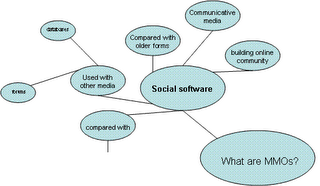 This is what he writes:
This is what he writes:There are some people who rightly sing the praises of the Ann Arbor District Library because its site is blog-based. However, blogs are restrictive relative to wikis in that the typical user cannot create an entry but only comment on it. In the library context, librarians are in control of their Web site content and users can only respond. This is valuable, to be sure, but in terms of radical trust (a Library 2.0 buzzword), it falls short.
This is a fascinating experiment. A blog is a good start - but wikis? Why not? I say, go for it. The possibilities are endless (IF designed properly). There are probably other library catalogues that are using social software features. Where are we going? Hopefully, to a more interactive, more accessible tool for users and patrons for all libraries and information systems. The game's still early, but it's already very promising from the looks of Ann Arbor District's brave, bold step forward.




